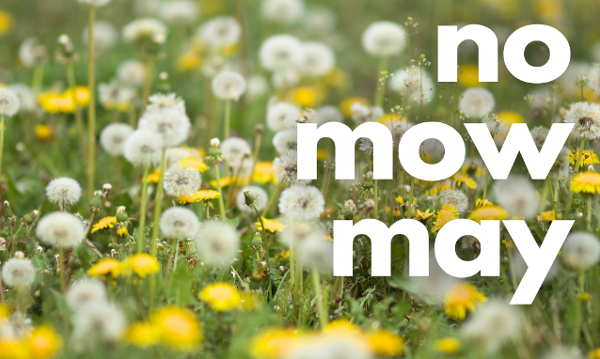- Wednesday 08 May 2024
- 0 Comments
As spring blooms and the days grow longer, many of us are itching to get out into the garden. But before you fire up the lawnmower, why not consider participating in "No Mow May"? This movement encourages gardeners to let their lawns grow wild for the entire month of May, providing a vital boost to local wildlife, especially pollinators like bees and butterflies.
Here are five simple steps you can take to support "No Mow May" and transform your garden into a haven for wildlife:
1. Stop mowing your lawn for the month of May
The first step is simple: put away the lawnmower and let your grass grow freely. By allowing your lawn to grow, you create essential habitat and food for pollinators. It's a small change that can make a big difference to local wildlife. Simple!
.png)
2. Let wildflowers bloom
Take some time to identify the wildflowers in your lawn and let them grow. These plants provide crucial food sources for pollinators and add natural beauty to your garden. Embrace the diversity of plant life in your lawn and watch as it comes alive with colour and activity.
Common examples include daisies, clover, buttercups, and dandelions. Once you know what you're working with, you can make informed decisions about how best to encourage their growth.
Encouraging wildflowers to establish themselves in your lawn may take time, so be patient! It can take several months or even years for a diverse range of wildflowers to become established. In the meantime, enjoy the beauty of the flowers that do appear, and take pride in knowing that you're providing valuable habitat for pollinators.
.png)
3. Avoid using pesticides and herbicides
Chemicals can harm pollinators and other beneficial insects, so it's best to avoid using them altogether. Instead, embrace natural methods of pest control and create a safer environment for wildlife.
- Encourage natural predators: Many garden pests have natural predators that help to keep their populations in check. Encourage these predators to visit your garden by providing suitable habitat and food sources. Ladybirds, lacewings, and ground beetles are all voracious predators of common garden pests like aphids and caterpillars.
- Companion planting: Planting certain species of plants together can help to repel pests and attract beneficial insects. For example, planting marigolds among your vegetable crops can help to repel aphids, while planting lavender and other fragrant herbs can attract pollinators like bees and butterflies.
- Use physical barriers: If you have particularly troublesome pests in your garden, consider using physical barriers to keep them at bay. Row covers can be used to protect crops from pests like caterpillars and birds, while netting can be used to keep out pests like rabbits and deer.
- Practice good garden hygiene: Keeping your garden clean and tidy can help to reduce the risk of pest infestations. Remove any plant debris or weeds where pests might hide, and regularly inspect your plants for signs of damage or infestation. By catching pest problems early, you can prevent them from getting out of hand.
- Use organic pest control products: If you do need to use pest control products in your garden, opt for organic and environmentally friendly options. There are many organic pest control products available that are derived from natural sources like plants and minerals, and that are safe to use around people, pets, and wildlife.
.png)
4. Create habitat areas
Consider leaving some areas of your garden undisturbed to provide nesting sites and shelter for wildlife. A pile of logs, a patch of long grass, or a wild corner can all provide valuable habitat for a range of species.
.png)
5. Spread the word
Finally, don't keep "No Mow May" to yourself – spread the word! Encourage your friends, family, and neighbours to participate and create a network of biodiverse gardens that support local wildlife.
Check out Biodiversity Ireland's website for lots of helpful info and tips about encouraging more wildlife diversity in your garden.


